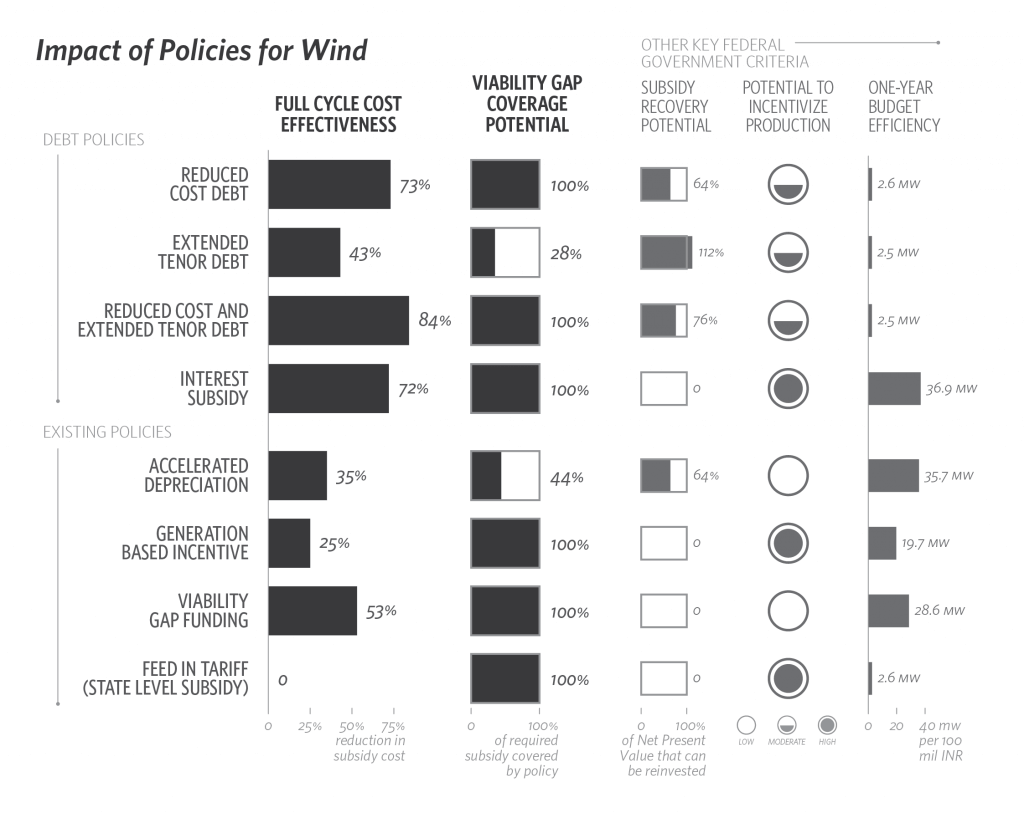Recently, the Government of India announced plans to award licenses for an additional one gigawatt of solar in the next year – about half the capacity of the Hoover Dam and enough to meet the energy needs of two million people. This move is part of India’s already ambitious targets for renewable energy that aim to address rising energy demand, decrease the country’s dependence on fossil fuel imports, and mitigate climate change.
To ensure the country meets these targets, India provides a package of renewable energy support policies that includes state-level feed-in tariffs and federal subsidies, which are in the form of a generation based incentive – a per unit subsidy; viability gap funding – a capital grant; and accelerated depreciation.
However, given the ambitious goals, but limited budget in India, the cost-effectiveness of these policies is an important factor for policymakers.
Our recent study “Solving India’s Renewable Energy Financing Challenge: Which Federal Policies can be Most Effective?” took on the question of cost-effectiveness by comparing a range of policy alternatives to the status quo.
Our findings were striking. We found that a policy that both reduces the cost of debt and extends its tenor is the most cost-effective. In fact, for wind energy, reducing debt cost to 5.9% and extending tenor by 10 years can cut the cost of total federal and state support by up to 78%. For solar energy, which is more capital-intensive, reducing debt cost to 1.2% and extending tenor by 10 years can cut the cost of support by 28%.
Still, while cost-effectiveness is clearly important, it may be only one of the many issues federal policymakers factor into their decisions. Recognizing this, we looked at a range of policies across the factors policymakers have indicated are important drivers of their policy choices:
- How much of the gap between the unsubsidized cost of renewable energy and the price of electricity could the federal government cover, i.e. what is the viability gap coverage potential? This helps determine the extent to which the federal government can support renewables in absence of state support, making it easier to garner state support for expensive renewables.
- How much of the budgetary allocation would the federal government be able to recover over time, i.e. what is the subsidy-recovery potential? This enables the federal government to assess whether funds deployed under a particular policy could be reused over time for other purposes.
- How could the federal government ensure that the production of renewable energy is incentivized and not just capacity installation? This is crucial to achieve the federal government’s goal of achieving 15% of electricity production through renewables by 2020.
- Given a fixed annual federal budgetary allocation, how much renewable capacity can the federal government support, i.e. what is the one-year budget efficiency? This enables the government to identify federal policies that would have the highest deployment potential in the short-term.
Our results for wind policies are in the figure below.


